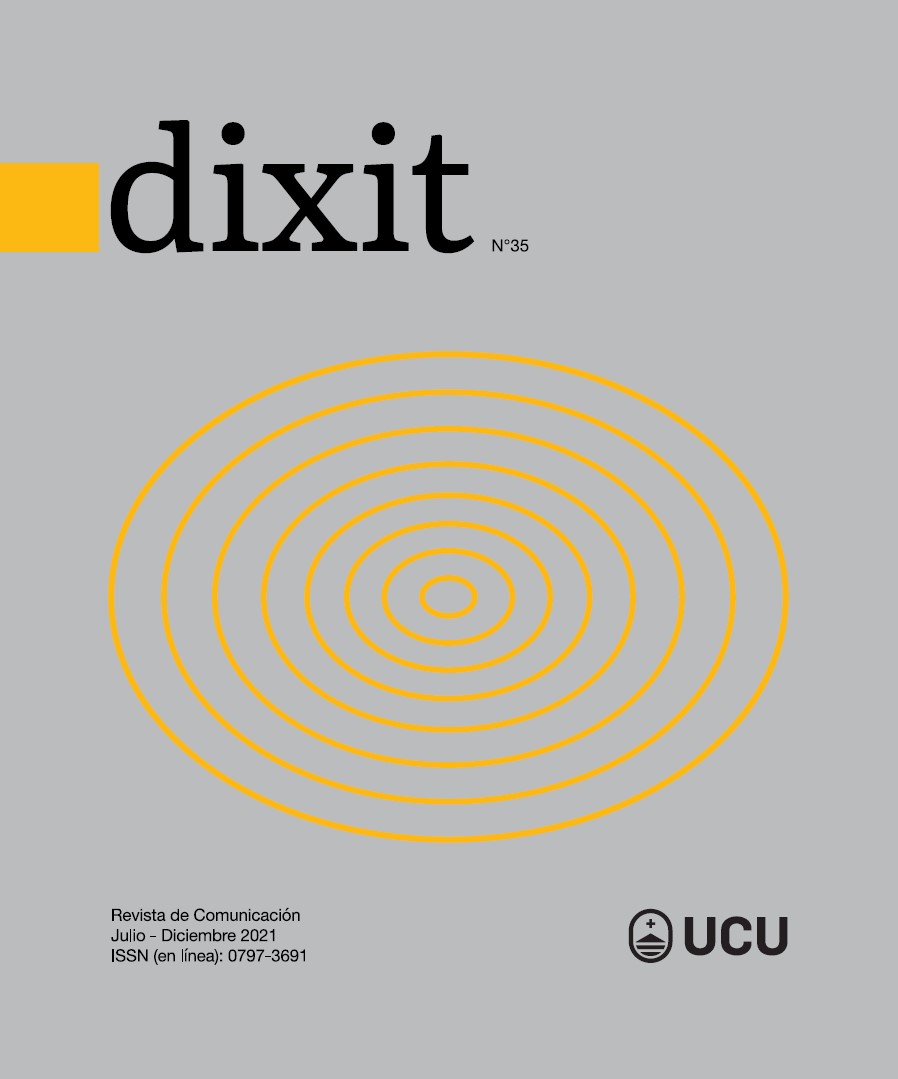Television in times of streaming
DOI:
https://doi.org/10.22235/d35.2735Keywords:
television, digital medias, infrastructure, platforms, network studiesAbstract
The goal of this presentation is to situate television studies in the context of the technological transformations which triggered the emergence of the digital platforms and their possibilities of content distribution. It starts with a warning on common assumptions from technological determinism perspectives triggered by the enthusiasm on the possibilities that the new media ecology has brought for television distribution; continuing with a reflection on the academic traditions and the way they account for the new modalities of what television is today. For this purpose, a brief survey on the perspectives of television studies and the surge of digital media studies is presented. In relation to the later, infrastructure studies, platform studies, and network studies have gained relevance because they capture the new reality of television on times of streaming. This presentation is based on a theoretical and methodological revision about the centrality of distribution, and its evolution into infrastructure studies (Piñón, 2018, 2019); but also guided by the contribution on television studies and digital media studies proposed by Ramon Lobato (2019).
Downloads
References
Aouragh, M., & Chakravartty, P. (2016). Infrastructures of Empire. Media, Culture and Society, 38(4), 559-575.
Appadurai, A. (2005). Modernity at large. Cultural dimensions of globalization. (7ª edición). Minneapolis, MN: University of Minnesota Press.
Bourdieu, P. (1984). Distinction. A Social Critique of the Judgement of Taste. Cambridge, MA: Harvard University Press.
Couldry, N., & Mejías, U. (2019). Data Colonialism: Rethinking Big Data’s Relation to the Contemporary Subject. Television & New Media, 20(4), 336–349.
Elsaesser,T., & Hagener, M. (2015). Film theory and introduction to the senses. (2ª Edición). Londres, Reino Unido: Routledge.
Gillespie, T. (2010). The politics of ‘platforms’. New Media & Society, 12(3), 347–364.
Havens, T. (2002). “It’s still a white world out there”: the interplay of culture and economics in international television trade. Critical Studies in Media Communication, 19(4), 377-397.
Havens, T. (2014). Media Programming in an Era of Big Data. Media Industries Journal,1(2). doi:10.3998/mij.15031809.0001.202
Helmond, A. (2015). The Platformization of the Web: Making Web Data Platform Ready. Social Media + Society, 1(2), 1–11.
Jenner, M. (2016). Is this TVIV? On Netflix, TVIII and binge-watching. New Media & Society, 18(2), 257–273.
Lobato, R. (2019). What is Netflix. En Netflix Nations. The Geography of Digital Distribution (pp. 19-46). New York, NY: NYU Press.
Lotz, A. (2007). Television will be revolutionized. New York, NY: NYU Press.
Lotz, A. (2017). Portals: A treatise on Internet-distributed television. Ann Harbor, MI: Michigan Publishing University of Michigan. doi:10.3998/mpub.9699689
Napoli, N. (2014). On automation in media industries: Integrating algorithmic media production into media industries scholarship. Media Industries Journal, 1(1), 33-38.
Negus, K. (2002). The work of cultural intermediaries and the enduring distance between production and consumption. Cultural Studies, 16(4), 501-515.
Park, L., & Starosielski, N. (2015). Introduction. En Signal Traffic. Critical Studies of Media Infrastructures (pp. 2- 27). Urbana, IL: University of Illinois Press.
Piñón, J. (2018, agosto). This is not the end, but a new beginning for television. Presentado en el XIII International Seminar of the Ibero-American Television Fiction Observatory (OBITEL). Universidad de Sao Paulo, Sao Paulo, Brasil.
Piñón, J. (2019). USA: Network infrastructure of the internet television industry. En M. Immacolata & G. Orozco (Eds.), Television distribution models by the Internet: Actors technologies, strategies. Ibero American Observatory of Television Fiction OBITEL (pp. 307-340). Globo Universidade, Editora Sulina.
Plantin, J.C., & Punthambekar, A. (2018). Digital media infrastructures: pipes, platforms, and politics. Media, Culture & Society, 41(2), 163–174.
Plantin, J.C., Lagoze, C., Edwards, P. N., & Sandvig, C. (2018). Infrastructure studies meet platform studies in the age of Google and Facebook. New Media & Society, 20(1), 293–310. doi:10.1177/1461444816661553
Siles, I., Espinoza, J., Naranjo, A., & Tristán, M.F. (2019). The mutual domestication of uses and algorithm recommendations on Netflix. Communication, Culture, and Critique, 12, 499-518.
Van Dijck, J., Poell, T., & de Waal, M. (2018). The platform society. New York, NY: Oxford University Press.
Vonderau, P. (2014). Beyond piracy. Understanding digital markets. En J. Holt and K. Sanson (Eds.), Connected viewing. Selling, streaming and sharing media in the digital age (pp. 99-122). New York, NY: Routledge.
Williams, R. (1990). In Television. Technology and Cultural Form (2nd ed.). New York, NY: Routledge.
Wu, A., Taneja, H., & Webster, J. (2020). Going with the flow: Nudging attention online. New Media & Society, 23(10), 2979-2998.
Downloads
Published
How to Cite
Issue
Section
License
Copyright (c) 2021 Dixit

This work is licensed under a Creative Commons Attribution 4.0 International License.
From issue number 32 onwards all contents are licensed under the Creative Commons Attribution 4.0 International License (CC BY 4.0).
Issues number 29-31 are licensed under the Creative Commons Attribution-NonCommercial 4.0 International License.
The contents corresponding to number 28 and earlier editions are under the Creative Commons Attribution-NonCommercial-ShareAlike 4.0 International License.


















